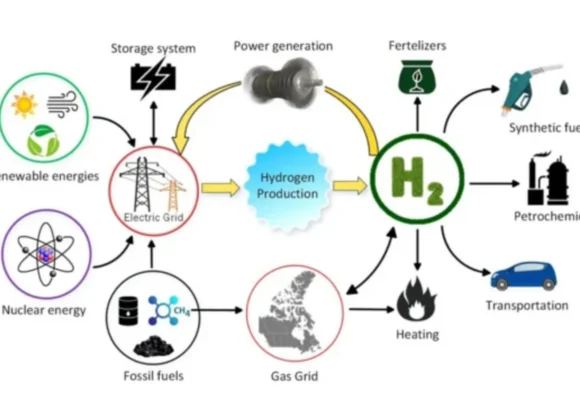In today’s fast-paced digital world losing significant important data is fear of many as this could lead to many serious loss and consequences for many business and individuals, data loss is a significant concern for individuals and many big and small businesses alike. Whether due to human error, hardware failure, or cyber attacks, the loss of critical data can have devastating consequences. This is where granular recovery technology comes into play. This innovative technology is revolutionizing the way data restoration processes are carried out, offering quicker and more efficient solutions for recovering lost data. In this article, we will explore the ins and outs of granular recovery technology and how it is reshaping the data recovery landscape.
What is Granular Recovery Technology?
Granular recovery technology is a sophisticated data restoration approach that allows users to recover specific pieces of data without having to restore an entire system or database. In traditional data recovery methods, the entire system or backup file is typically restored, which can be time-consuming and resource-intensive. With granular recovery technology, users can pinpoint the exact data they need to recover, whether it’s a single file, email, database record, or even a specific object within a file. This targeted approach not only saves time but also helps minimize disruption to normal business operations.
How Does Granular Recovery Technology Work?

Granular recovery technology leverages advanced algorithms and data processing techniques to scan and extract specific pieces of data from storage devices or backup files. By analyzing the data at a granular level, this technology can identify and recover individual items without affecting the rest of the data set. For example, if a user accidentally deletes an important email, granular recovery technology can isolate and restore that specific email without having to restore the entire mailbox. This precision and efficiency make granular recovery technology a valuable tool for IT professionals and data recovery specialists.
Benefits of Granular Recovery Technology
Time Efficiency: Granular recovery technology significantly reduces the time required to restore data, as users can quickly retrieve specific pieces of information without having to restore the entire system.
Cost Savings: By targeting only the necessary data for recovery, organizations can save on storage resources and minimize downtime, leading to cost savings in the long run.
Minimized Disruption: Granular recovery technology helps minimize disruption to normal business operations by allowing users to recover data without affecting other parts of the system.
Enhanced Data Security: With granular recovery technology, users can ensure the security and integrity of their data by selectively restoring only the needed information, reducing the risk of data loss or corruption.
Implementing Granular Recovery
Technology in Your Organization: To leverage the benefits of granular recovery technology in your organization, consider implementing the following best practices:
Regular Data Backups: Ensure that your organization performs regular data backups to facilitate quick and efficient data restoration using granular recovery technology.
Training and Education: Provide training to IT staff and end-users on how to effectively use granular recovery technology to recover lost data in a timely manner.
Invest in Reliable Recovery Solutions: Choose a reputable data recovery solution provider that offers granular recovery technology as part of their service offerings.
Conclusion
Granular recovery technology is a game-changer in the field of data restoration, providing organizations with a more efficient and targeted approach to recovering lost data. By implementing best practices and leveraging the benefits of this technology, organization can ensure the security and integrity of their data while minimizing downtime and cost. Embrace the power of granular recovery technology and revolutionize your data restoration processes today.
FAQ’s
What is granular recovery technology system?
Granular recovery technology is a data recovery method that allows users to restore specific individual files or pieces of data from a backup, rather than having to recover an entire backup set. This technology is particularly useful in scenarios where only certain files or data need to be restored, saving time and eliminating the need to restore unnecessary data. Granular recovery technology works by indexing the contents of a backup to make it easier to search for and recover specific files or pieces of data. It is commonly used in data backup and disaster recovery solutions to provide a more efficient and targeted approach to data recovery.
What is the GRT in backups?
Granular Recovery Technology (GRT) backups refer to a backup method that allows for the selective restore of individual files or objects from a larger backup set. GRT backups enable users to recover specific data without having to restore an entire backup, which can be time-consuming and resource-intensive. This approach is particularly useful for organizations that deal with large volumes of data and need to quickly recover specific items in case of data loss or corruption. GRT backups streamline the recovery process by providing a more efficient and targeted way to retrieve critical information, improving overall data management and minimizing downtime in the event of a disaster.
What is a granular backup approach?
A granular backup is a type of backup that allows users to restore individual files or data elements without having to restore the entire backup. This means that instead of having to recover an entire system or application, users can select specific files, folders, emails, or database records to restore. Granular backups are particularly useful for situations where only a subset of data needs to be recovered, saving time and storage space compared to full backups. By enabling more targeted recovery options, granular backups offer greater flexibility and efficiency in data protection strategies.
What are the 3 types of backups?
The three backups refer to the three copies of your data that are stored in different locations to ensure its safety and availability. These backups are essential for data protection and disaster recovery. They typically include:
Full backup: A complete copy of all your data at a specific point in time.
Incremental backup: Backs up changes made since the last backup, reducing storage space and time required.
Differential backup: Copies all changes made since the last full backup, making it easier to restore data quickly.
Having these three types of backups ensures redundancy and minimizes the risk of data loss in case of system failures, cyber attacks, or human errors.
What is media recovery in data processing system?
Media recovery in data processing refers to the process of restoring lost, damaged, or corrupted data from storage devices such as hard drives, tapes, or cloud servers. This essential practice involves recovering data that has been accidentally deleted, overwritten, or compromised due to hardware failure, software issues, or cyber attacks. Media recovery is crucial for businesses and individuals to recover valuable information and minimize potential data loss risks. By utilizing specialized software tools and techniques, data recovery experts can often retrieve lost data and restore it to a usable state. Having a media recovery plan in place is essential to ensure data integrity and continuity in data processing operations.




